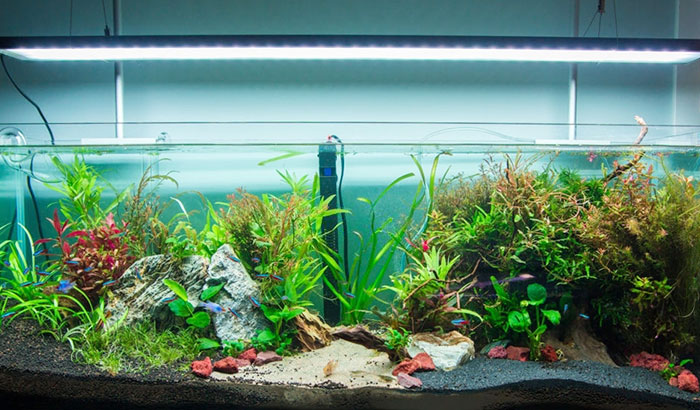WhistlingBadger
Professional Cat Herder
Retired Moderator ⚒️
Tank of the Month 🏆
Fish of the Month 🌟
- Joined
- Dec 18, 2011
- Messages
- 7,014
- Reaction score
- 13,034
- Location
- Where the deer and the antelope play
Here's a bit more about the rule of thirds, stolen from a previous post. Hope it makes sense. 
Think in terms of focal points: Spots that draw the eye. Focal points can be hard structures (rocks or wood structures) or interesting accent plants. For your scape, a particularly interesting piece of wood, an intersection of several, or an interesting rock formation would form a great focal point.
Put a focal point about 1/3 of the way in from the side of the tank around 2/3 the height.
It makes a natural-looking but coherent scape.

Something like this, with a wood structure as a primary focus and a really interesting plant (or rock, or pot, or more wood--just anything that sort of draws the eye into the scene) as a secondary focal point. These points get one's attention initially, drawing the viewer's eye into all the other interesting but more subtle plants and such waiting in the background.

Think in terms of focal points: Spots that draw the eye. Focal points can be hard structures (rocks or wood structures) or interesting accent plants. For your scape, a particularly interesting piece of wood, an intersection of several, or an interesting rock formation would form a great focal point.
Put a focal point about 1/3 of the way in from the side of the tank around 2/3 the height.
It makes a natural-looking but coherent scape.
Something like this, with a wood structure as a primary focus and a really interesting plant (or rock, or pot, or more wood--just anything that sort of draws the eye into the scene) as a secondary focal point. These points get one's attention initially, drawing the viewer's eye into all the other interesting but more subtle plants and such waiting in the background.

